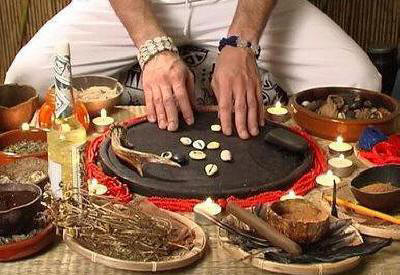Santeria is a belief system that has its roots in Yoruba land, West Africa. During the times of slavery, in the 17th century, this belief system took a journey from West Africa to Cuba. It survived centuries despite attempts to eradicate and became popularly known as Santería because initially Africans saw similarities between some of the Catholic Saints and their Yoruban Deities. The name was also a way of disguising their practices behind a Catholic façade.
Most modern day practitioners whose branches of the religion have their roots in Cuba, like to call themselves Lucumi practitioners and the religion, Santeria is sometimes also called” La Regla De Ocha.” (The rule of the Orisha). These days the religion is widespread and practiced all over the Caribbean, Latin America and mainland United States of America, even in Europe. Yet there is still much fear, mystery and misunderstandings Santeria. Here are ten things you should know about Santeria.
1. There is only One God...Like many modern religions,Santería followers believe in just one God, the Creator known as Olodumare. It is neither a Polytheistic nor a Pagan religion, nor an animistic one. The reason why there is confusion is that many refer to the Orishas as Gods. Strictly speaking, the Orisha are not Gods but aspects of Olodumare that are manifested in the natural world around us.
Each individual is thought to be a child of an Orisha…There are hundreds of Orisha, but there are some that are more popular than others. Amongst the most well known Orishas areElegua, the trickster deity, Ogun, the blacksmith warrior andOchosi the hunter. They are collectively known as “The Warriors”.
Then there is Yemaya, The Mother deity that rules the Ocean and is the mother of us all. Oshun is the deity of the sweet waters and is also the patron of all that makes life worth living, the arts, music, love and sweetness. Obatala is the King of the White Cloth, the Owner of all uninitiated heads and stands for wisdom, patience and justice. He also reminds us to respect our elders. Shango is the King of the Drum, a deity who was once a King of Oyo. His Domain is Thunder and lightening.Oya is the Orisha that guards the gates of the Cemetery; She is also Queen of the market place. There are many many others, all who have equal importance.
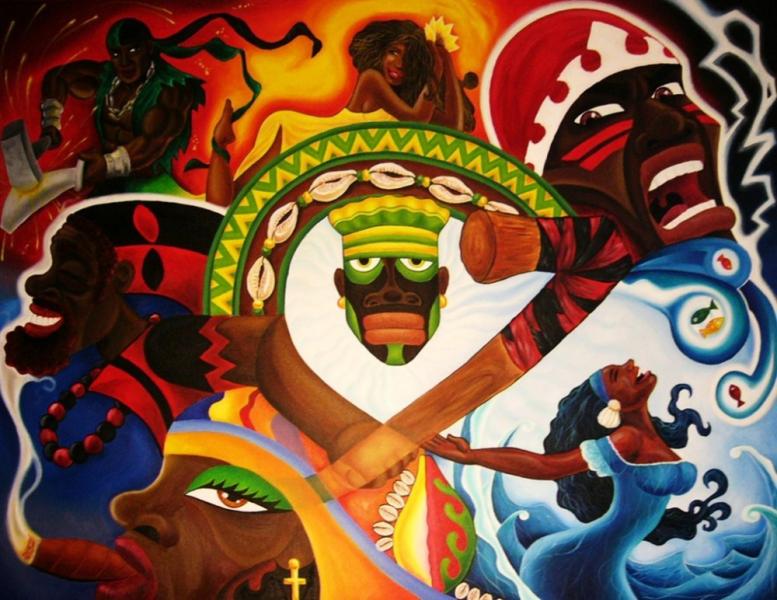
2. Santería practitioners worship their ancestors; Like most African Religions there is a great emphasis on Ancestor Worship. A reverence to the Ancestors is fundamental to the Santería religion and before every ceremony, libation and prayers to the ancestors are carried out. It is important to know and mention by name the members of your own family that have passed to the realm of the ancestors in addition to members of your religious ancestors.
In addition to practices that have their roots in Africa, the European practice of espiritismo and Misa Blanca has been adopted by Santería practitioners. Within this context there is no hierarchy. Everyone is encouraged to develop his or her own abilities as a medium. Prayers are carried out and songs are sung in order to call spirit to communicate with those present. The founder of this practice was a man called Allen Kardec, a French Educator who was born in France in 1804. He believed that human beings are Spirit within a material body and that our true selves are spiritual rather than material. He believed that we each have our own guardian angel assigned to us and entrusted with our care, and we in turn must elevate them so that they can look after us.
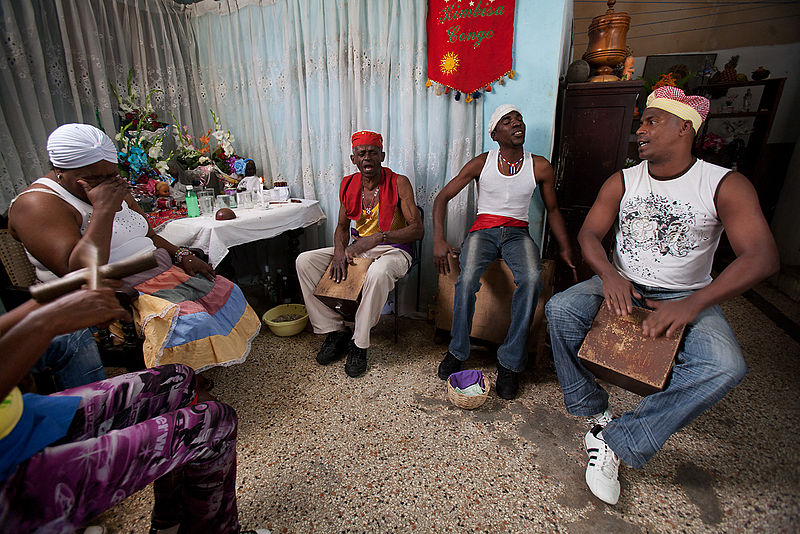
3. Santeria is not a do it yourself religion...it is a community based religion with a clearly defined hierarchy. Trained priests perform ceremonies. These priests belong to a community of priests who also have a long historical lineage. Many priests will practice together in an Ile (a religious house) and train for different roles.
Initiation does not make a priest. Most competent Santerosand Babalawos have undertaken years of training and study. Like priests in other religions, there are good ones, not so good ones and bad ones. Akpwon is a knowledgeable singer of the religious songs. Omo Aña is a child of the Aña, the only ones that are allowed to play the sacred consecrated drums that accompany Tambors. Aborisha are non-initiated Santeria practitioners belonging to an Ile. There are also those that specialize in cooking religious food; those that are specialists in herbs; those that are beaders, throne makers and Blacksmiths and various other roles. An Iyawo is a newly initiated priest of Santería.
The ORIATE/OBA are highly skilled priests of the religion. They are also trained and skilled as Diviners of the System of theDilogun, the mouthpiece of the Orisha. They direct the most important and complex ceremonies.
4. DIVINATION...At some point in their lives a follower of Santeria will find themselves at the feet of Ifa or the Dilogun. (Divination with 16 cowrie shells) These are the two major and highly sophisticated forms of Divination within the Santeria religion.
Within a reading there is a possibility of 256 different signs that could come up. Each sign has various parables and stories attached to it. A reading will let the Client know where they are in their lives. A reading refers to the past, present and future. They will be advised on how to balance their lives; which path they should take regarding personal relationships, work and social and spiritual activity and practical recommendations on how to achieve their goals. Whether the client asking for the reading takes upon the advice and does the work given is another matter. At the end, it is a question of free will and the client has the choice as to whether or not to follow the advice of the reading. There is also the system of Obi. This is the throwing of five pieces of Coconut. This is a simpler form of divination, which is used by Santeros when they wish to communicate with their Orisha.
5. The Period of initiation takes a year and a week...The initial period of seven days in which various ceremonies are carried out, is followed by a year of a very very strict code of conduct, which includes, the wearing of white and special sacred beads and bangles. It requires the new initiate to refrain from contact with non-initiates. They are not allowed to drink alcohol, to wear make up, to shave or to eat with everyone at the table. They are not allowed out after dark, not permitted to go to crowded places, not permitted to shake hands with anyone or hug non-initiates. They are not allowed to take any objects directly from anyone or to walk barefooted. They are prohibited from having their photo taken, prohibited from partying and have to drink and eat only from a special bowl and spoon and cup that they must carry around with them at all times.
They are supposed to keep themselves very pure and to spend time understanding and studying the advise from the Orisha. They must keep their heads covered at all times. Basically this year is the beginning of their new journey and they are reborn. After the year is up. Priests still continue to follow certain taboos and restrictions that are for life. Every individual Santero has different taboos relating to them as an individual. An Iyawo is a newly initiated Santero.
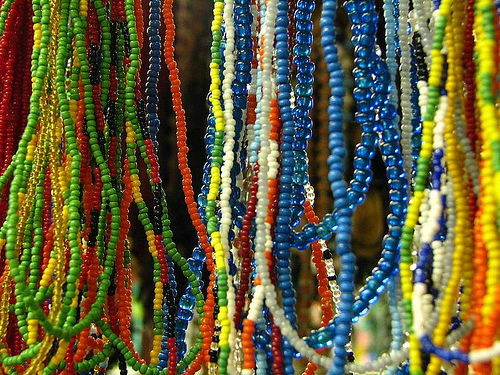
6. There are two concepts that are vital to the core beliefs of Santeria. The first one Is Ashe (also known asAse, Ache or Axe). It means very simply life force. Ashe is generative energy that Olodumare has blessed us all with. It is energy; breath, life force and we cannot exist without it. Ashegives us the power to create and the wisdom to see things through. Without Ashe there is no life.
The second is Iwa Pele, which means good or gentle character. For Santeria followers, initiated as priests or not, It is important to grasp the meaning and entity of Iwa Pele. Living with good grace is what gives us a purpose in life. As spiritual beings we are responsible for living the best life that we have been blessed with. Our life's work should be to evolve and to analyse our faults and improve upon them. It is important to strive to be a better person, a person with good character. By doing this one can change the energy flow around us. A title such as Babalawo, or Santero, means little, if that individual cannot show that they live and understand the concept of Iwa Pele
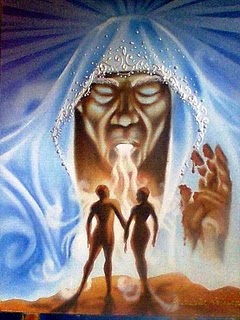
7. Santeria is not witchcraft...Many people are fearful of religions such as Santeria and Vodun since they equate the religion with practices of Witchcraft. Santeria is not Witchcraft. It is not the study of spells or using spells to harm or affect anyone else. Anyone who thinks that Santeria can be used to keep a girlfriend, harm an enemy or win the lottery has not understood the principals of Santeria and is misguided. Santeria is about living the life that has been assigned to you the best way you possibly can. Followers of Santeria may use various tools to protect themselves such as spiritual baths or the wearing of sacred Necklaces. They may use various herbs to cleanse or protect, or they may make offerings to their ancestors or to Orisha. That does not equate with Witchcraft.
8. Animal Sacrifice is a tiny part of a practitioner ‘s routine...Much has been made about Animal Sacrifice in the Santeria religion. Offerings to an Orisha may include a glass of water, flowers, a candle, fruit or prepared items of food. More often than not a reading will recommend behavior modification or suggestions for improving ones behavior. It is rare that an animal would be marked for Sacrifice. However it is a part of the practice of Santeria.
There is nothing cruel about the sacrifices and more likely than not the animal is eaten and not thrown away. The animal is slaughtered in the same way that animals are slaughtered in Jewish and Moslem practice for Halal or Kosher meat. Prayers accompany the sacrifice and more often than not, those attending the ceremony eat the animal.
9. A Santeros house is their temple...In general Santeros do not have a Church or a place of workshop as such. Their houses are their temples. They do not have anything such as a bible and commandments but each Santero has their own personal advice from the Orisha that they should follow. They use systems of Divination as their guides and they also look to the ancestors for help and guidance. The stories and moral tales that derive from the Divination systems were passed down orally, but there are also now books that tell them.
10. There are songs that accompany every single ceremony….and it is important as a follower of Santeria to learn the songs in order to join in and create a good Ashé. One of the most public of ceremonies is a Ritual drumming called An Aña or Tambor de Fundamento. The ceremony is public and anyone can come in, although the uninitiated have to be at the back and not approach the drums. Everyone can sing the songs though and it is important that everyone sings in order to build up the energy. The drum are consecrated and within them lives an Orisha called Aña. Aña is the Orisha that make the drums speak. A tambor is a ceremony that involves the bringing down of Orisha. The initiated priests become vessels for the Orisha to inhabit for a short time, in order to impart their knowledge and positive advise to all that partake in the ceremony.
There are many cultural projects these days that have explored the tradition of Orisha Song, however they are cultural interpretations and although the rhythms are the same, the drums are not consecrated. It is important to note that the songs are beautiful, the singing of them are deep but they are in essence a cultural interpretation that come from a living breathing spiritual tradition.
DANIELA R DE ARMAS is an Olorisha and Director of The London Lucumi Choir, which has been nominated for both a LUKAS awards (www.thelukas.co.uk) and for Songlines World Music Awards. ( Best Group and Best Newcomer)http://www.songlines.co.uk/music-awards/index.php


